Kaiju Shakedown: Disappearing in Plain Sight
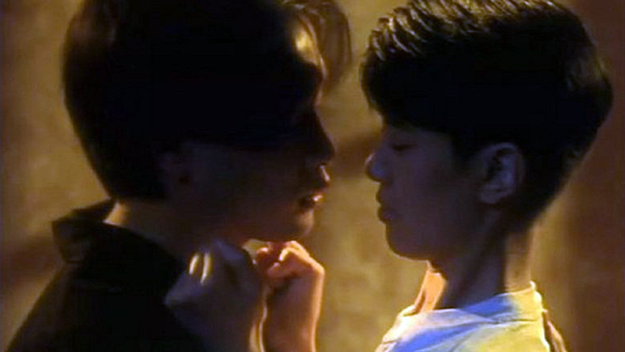
He’s a Woman, She’s a Man
Here’s how bad it is: back in 2012, the Hong Kong International Film Festival honored Peter Chan, choosing him as their Filmmaker in Focus. They were set to screen a bunch of his movies, including his massive 1994 hit, He’s a Woman, She’s a Man. The only problem was, no one had a print. There was nothing usable in the Hong Kong Film Archive. The rights holder had sent over a print that was dubbed in Mandarin. Digital presentation was out because the movie is no longer in print on DVD. At the last minute, Jacob Wong, Li Cheuk-to, Bede Cheng, and I managed to locate a 35mm print, in Cantonese, that was owned by a private collector who generously lent it to the festival.
Think about that. One of the biggest hits of the mid-Nineties, when Hong Kong cinema was at its zenith. A movie starring the legendary Leslie Cheung and four other major stars. A movie directed by one of China’s most successful directors, from one of Hong Kong’s most famous production companies. And there is maybe one 35mm print left in existence. But that’s the story of Hong Kong cinema: it’s disappearing.
Fortunately, there are people out there fighting the good fight, and Bede Cheng is one of them. Tapped to head up L’Immagine Ritrovata Asia—the Hong Kong offices for the swanky Italian film preservation company, founded by the Cineteca di Bologna—he’s up to his elbows in rotting celluloid, digitally restoring Asian movies, and battling the complicated issues surrounding film preservation in Hong Kong. He took a few minutes to chat with Kaiju Shakedown last week about the enormity of the task.
“A lot of people have the impression that you only restore films that are very, very old, where all the people involved are dead,” he said. “But if you restore newer films now, while the people who made them are still alive, they know what the film should look like.”
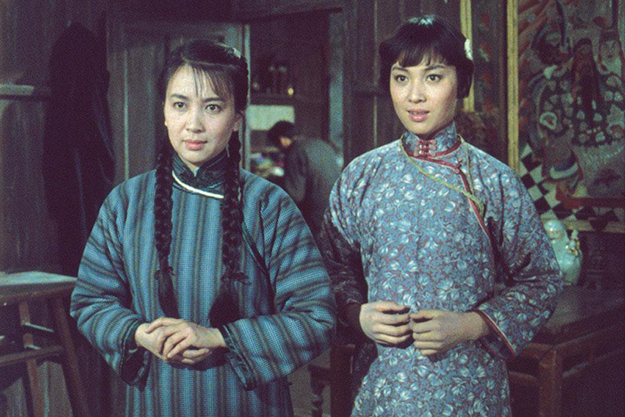
Stage Sisters
The ideal material to work with is the camera negative, which has been manipulated the least. And the first thing that L’Immagine Ritrovata Asia does when they get this negative is a physical inspection. Bede explains, “It’s just the manual labor of examining it, seeing the condition, what kind of shrinkage it has, and issuing a condition report.” Then they begin to repair what’s wrong, from torn perforations to removing old editing tapes, many of which were sloppily applied to the part of the negative that contains the image. “If you’re painting a new wall,” Bede said, “you want to scrape off the old paint first.”
Next, the film goes into a washing machine to remove the dirt, grime, and dust. Then it’s time for the scanner. The company’s scanner goes to 6K but 4K is the industry norm right now. Once the film is inspected, repaired, stabilized, cleaned, and scanned, it’s sent off to L’Immagine Ritrovata’s labs in Italy, where the work of restoration can begin.
“A lot of people have the wrong impression of what film restoration should be,” Bede said. “Some labs do it like a factory. Film restoration is much more than sitting in front of a computer and clicking and brightening the color. It’s like restoring an artifact. Some labs think it’s about sprucing up the colors and making everything look colorful and glossy, but the film never looked like this.”
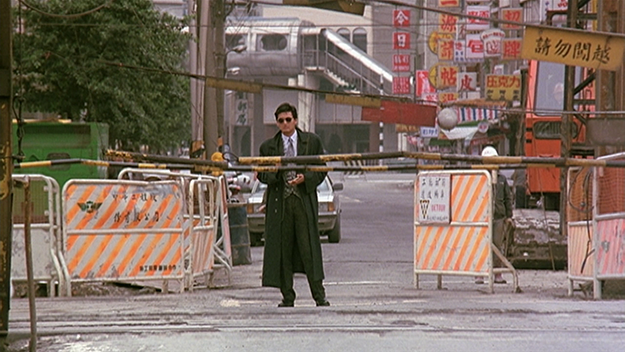
A Better Tomorrow
“Our philosophy is minimal intrusion,” he continued. “We find reference material like tapes from the old film company, or we use films from the same era. We take note of what the negative stock is. It could be Fuji, it could be Kodak—they all have different color sensitivity, and it varies between the years. We try to keep the color as original as possible.”
Recently, L’Immagine Ritrovata began a film restoration project with the Shanghai International Film Festival sponsored by the Swiss watch company, Jaeger-LeCoultre. The first movie they restored in a 4K scan was Stage Sisters (64), a women’s picture set in a Chinese Opera troupe that was targeted for attack during the Cultural Revolution. The second movie in the series to receive a 4K scan and restoration was John Woo’s classic A Better Tomorrow (86).
“Fortune Star keeps their library quite well,” Bede said, referring to the company that purchased the Golden Harvest catalogue and now owns the rights to A Better Tomorrow. “And for A Better Tomorrow we were lucky because we got to work with the original camera negative. I wouldn’t say the condition was good—there were tears, and scratches, and dirt, and mold—but it’s about standard for a film that turns 30 next year.”
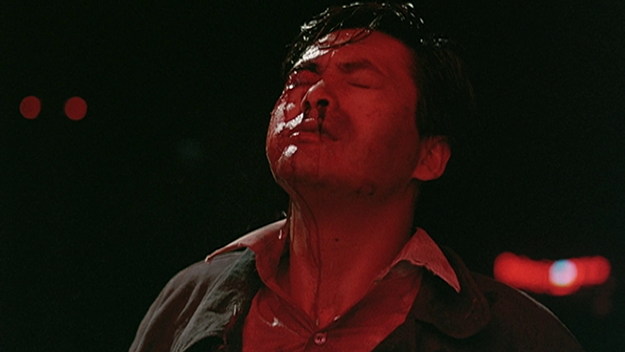
A Better Tomorrow
Sitting down with the movie’s cinematographer, Horace Wong, the lab worked hard to stay true to A Better Tomorrow’s original image, even when it was the result of adverse shooting conditions. “The night scenes are very dark,” Bede said. “And Horace Wong said that it was because at the time they had no money to rent lights. The image itself tells the story behind the film, because no one thought it would make any money, and yet it went on to change the lives of everyone who worked on it.”
The next film to be restored by L’Immagine Ritrovata Asia with the Shanghai Film Festival is Derek Yee’s 1993 melodrama, C’est la vie, mon chéri, about street performers falling in love and working on Hong Kong’s Temple Street. Not only was the movie a huge hit that helped launch Anita Yuen and Lau Ching-wan’s careers, but it’s a valuable document that preserves a now vanished slice of urban Hong Kong.
L’Immagine Ritrovata Asia also just digitized the Emperor Films library, although it’s so recent that it didn’t need restoration. More excitingly, they’re in the middle of restoring Golden Harvest’s Bruce Lee films: The Big Boss (71), The Way of the Dragon (72), and Fist of Fury (72). Which leads into one of the big problems with film restoration in Hong Kong: the rights.
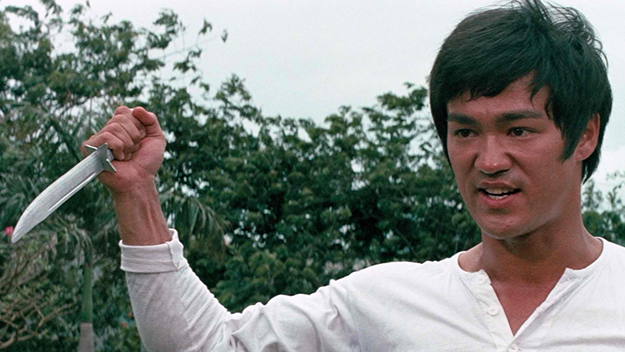
The Big Boss
“A lot of films made in the Eighties, in particular, the rights are all messed up,” Bede said. “They never realized that they could make a film and still make money from it three or four decades later. So they just sold the overseas rights and now they’re all over the place, and it’s very hard to retrieve them.”
Most producers license their foreign rights rather than selling them outright, usually for a term of five years. But numerous past Hong Kong producers, looking to make a quick buck, sold their overseas rights in perpetuity. If you’re going through the trouble and expense of restoring a movie, you want to make sure you can exploit that restoration in as many territories as possible, but if you only own the rights to Chinese-language territories, that makes the job of restoration that much less attractive. Who owns the rights to the Bruce Lee movies that Fortune Star is restoring? Fortune Star owns the Chinese-speaking territory rights, but the North American rights are harder to figure out. The Big Boss was originally distributed on the now-defunct Chinatown circuit in North America; later it was re-released by Columbia; 20th Century Fox put it out on home video; and the streaming and TV rights are owned by Miramax. Most distributors will avoid this kind of spaghetti-bowl of entangled rights, which means that there’s less incentive to restore many Hong Kong films.
Asked about the state of Hong Kong’s film preservation, Bede says: “Films from the Nineties are okay, and if the film is from a big studio, you’ve got a better chance, or if you’re Derek Yee—he keeps all his materials in a humidity-controlled cabinet. There’s always the problem of space in Hong Kong: where do you keep your stuff? Everything after the Seventies we probably have enough material circulating for most films, although even in the Eighties films do kind of tend to disappear all over the place. But the Fifties and Sixties are another matter. That’s also the Mandarin and Cantonese cinema that people regard as very old and low budget. But a lot of those films are really, really good and don’t get the respect they deserve.”
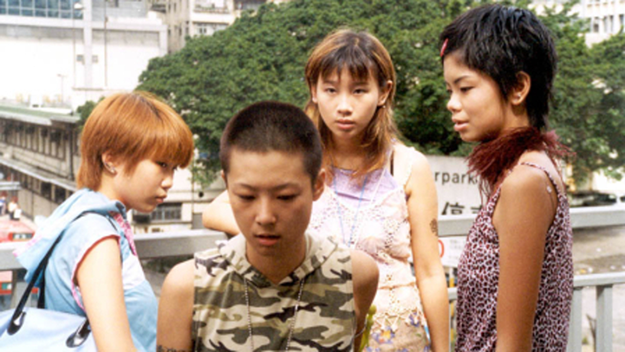
Spacked Out
That’s probably because few people have a chance to see them. The Hong Kong Film Archive does the best it can, but, chronically underfunded, it’s at the mercy of what companies and collectors choose to donate. So while the big-name titles often have materials available for restoration if their rights situations can be sorted out, huge swathes of B-list Hong Kong movies are simply gone. The taut girls-with-guns thriller Fox Hunter (95) was on laserdisc and VHS but never made the jump to DVD and considering that all three companies which produced and distributed it are out of business, it’s probably gone. The same goes for the ambitious art-house film The Accident (99), the Johnnie To–produced social drama Spacked Out (00), or even the deconstructionist cop film The Log (96).
In a world where there still isn’t a complete home-video version of Tsui Hark’s Peking Opera Blues (86), where it’s almost impossible to figure out who owns the overseas rights to Bruce Lee’s movies, and where a film like He’s a Woman, She’s a Man has one print left, there are no shortage of worthwhile restoration projects to be undertaken. But maybe people should think about starting with The Killer (89), the movie that broke John Woo out in the West. “It’s like an art film,” Bede says. “John himself has mentioned it. However, I think it’s a rights issue. He would love to see his movie restored. But…
He trails off. Because the fact is, few distributors are willing to spend the time and energy untangling the legal issues surrounding these movies before they can restore and preserve them. And in the meantime, Chinese cinema is disappearing at the same rate it’s being saved: one film at a time.
LINKS! LINKS! LINKS!
For the final Kaiju Shakedown of 2015, let’s take a look at what’s coming up in 2016 and beyond!
…Hey, kids! Stephen Chow is remaking Splash! It’s called Mermaid and here’s the first poster for his first movie since 2013’s Journey to the West, set for release on Chinese New Year 2016.
…Terrible music? Check. Poorly dubbed English dialogue? Check. Terrible CGI? Check. A Donnie Yen digitally scrubbed free of facial lines until his face looks like an egg? Check. Fortune-cookie words like “destiny,” “fate,” “honor,” “empire,” and “legend” strung together with no rhyme or reason? Check! It must be the underwhelming trailer for Crouching Tiger, Hidden Dragon 2!
…If you want to wash the taste of that trailer out of your mouth, try the trailer for Ip Man 3, featuring Mike Tyson. (Before you get all bent out of shape, Bruce Lee cast an African American athlete who had no business being in a kung fu film first when he put Kareem Abdul-Jabbar in Game of Death.) This time around, America gets the movie in December, a full three months before it comes out in China. Yuen Wo-ping is on action (Sammo Hung choreographed the previous two installments) and both this and CTHD2 are collaborations between Yuen Wo-ping and Donnie Yen. And there is no contest: Ip Man 3 looks better, even with Mike Tyson.
…Sammo Hung may not be working on the new Ip Man movie, but he is working with Hong Kong’s big-budget action director, Benny Chan (Shaolin, Big Bullet, White Storm), on The Deadly Reclaim, slated for a 2016 release. Set in 1914 during the collapse of the Qing Dynasty, it’s about a village that stands up to a ruthless young warlord. It’s got an all-star cast with Louis Koo playing said warlord, Lau Ching-wan playing the village elder (and wielding a whip), and Wu Jing playing someone who probably gets in a lot of fights. No clue as to why anyone is financing an old-school, period kung fu movie in China when they seem to do nothing but flop, but watch this promo (which includes fantastic glimpses of Sammo Hung at work), and you’ll be glad they did.
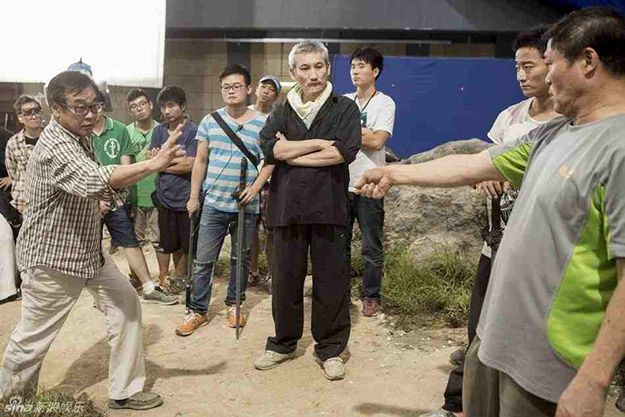
Set photo from The Sword Master
…Speaking of old school, whatever happened to Derek Yee’s 3-D wuxia film, The Sword Master? Produced by Tsui Hark and directed by Yee, one of Hong Kong’s A-list master directors, the project was announced back in April 2014. When social media erupted in an uproar over the lack of stars in the film, Yee took to Sina Weibo to write:
“If a collaboration between Tsui Hark and I still need big stars to get you to waste your time and spend your money on a ticket, then we might as well pack up, go home, drink whiskey and shoot the breeze . . . It doesn’t matter who’s acting in the film. Tsui Hark and I are the top stars of the film!”
Set photos appeared in September 2014 and the movie was slated for a 2015 release. But over a year after shooting wrapped, there’s still no sign of it.
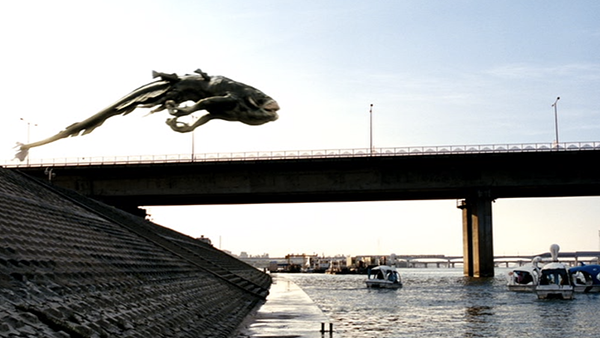
The Host
…And whatever happened to the sequel to Bong Joon-ho’s The Host (06)? One of the highest-grossing movies of all time in Korea, and Korea’s finest contribution to the giant monster genre, a sequel was announced in 2007, and in 2008 a separate Host sequel was announced as a Korean-Chinese co-production to be shot in China. That was almost eight years ago. Since then… silence. Where is it?
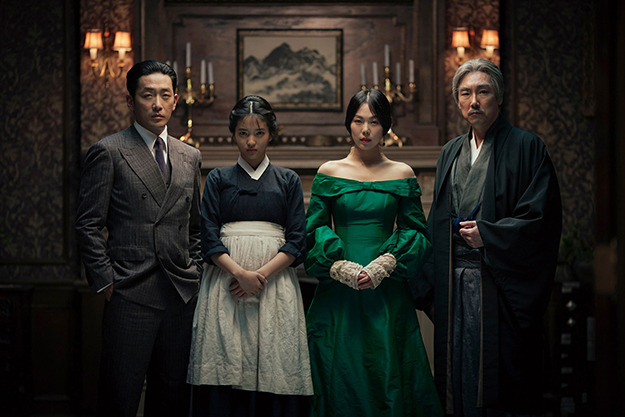
The Handmaid
…Speaking of Bong Joon-ho: the big three directors of Korean cinema are all set to debut new movies in 2016 and 2017. Park Chan-wook’s Fingersmith adaptation, The Handmaid, is set for the second half of 2016, although I wouldn’t be surprised if he tries to make Cannes. It’s set during the Japanese occupation of Korea, as is Kim Jee-Woon’s new movie, The Secret Agent, starring Song Kang-Ho, about a Korean resistance group fighting the Japanese. Bong Joon-ho has chosen not to make a movie set during the Japanese occupation, although given how little we know about his new movie, Okja, it might well be. Produced by Brad Pitt’s Plan B and Netflix, with a budget north of $40 million, set for a 2017 release, Bong describes it as being about “a warm friendship between a country girl and a brute with stories.” It stars Tilda Swinton, Paul Dano, and Bill Nighy. No word yet as to which one plays the brute.
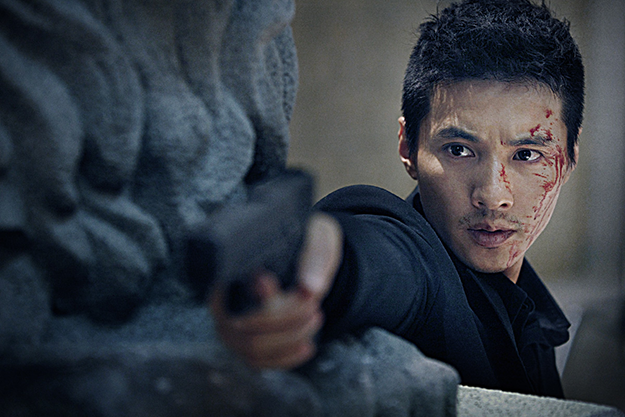
The Man from Nowhere
…The hit Korean action flick, The Man from Nowhere (10), is getting a Bollywood remake, set to bow on February 5. Rocky Handsome stars John Abraham and before you ask, yes, this movie about a man on a ruthless quest to rescue an 8-year-old girl who has been kidnapped to have her eyeballs sucked out, is a musical.
…But the Bollywood movie everyone’s excited about is Fan starring Shah Rukh Khan, one of the biggest stars in the world. Who will basically play himself. In a movie about his number-one fan… also played by himself. So deeply meta, the film’s release date (April 15, 2016) was announced via graffiti, the movie’s teaser trailer was released via a fan’s Twitter feed, and the film is packed with vintage footage of SRK. It’s from Yash Raj Films, sort of the Disney of Bollywood, so it can’t get too creepy. Or can it? Because the last shots of this second trailer are deeply creepy.
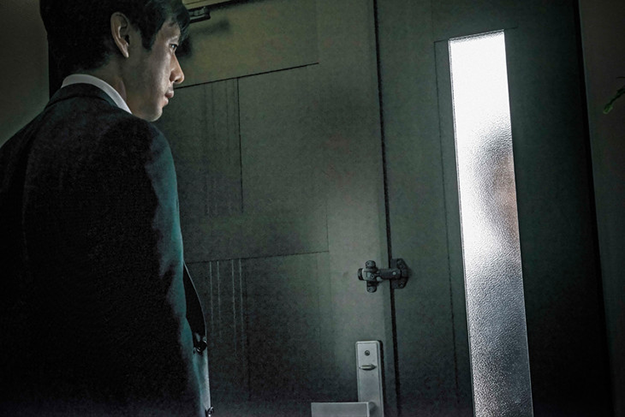
Creepy
…Creepy is also the title of Kiyoshi Kurosawa’s next movie, due out in June 2016. About a detective who thinks that his creepy next door neighbor may have been involved in an abduction case he worked six years previously, it stars Hidetoshi Nishijima as the detective and Teruyuki Kagawa as the neighbor. The two actors previously starred in Double Face (12), the Japanese adaptation of the Hong Kong heavyweight Infernal Affairs (which was also remade by Martin Scorsese as The Departed). They also played opposite each other in the hit Mozu the Movie.
…It’s not just Godzilla who’s getting a new Japanese movie in 2016: Gamera is returning to the big screen, too. What’s even more exciting is that Katsuhito Ishii has been tapped to direct it. Who’s that? Only the director behind two of the craziest movies ever made: A Taste of Tea (04) and Funky Forest: The First Contact (05). Footage played at the 2015 New York Comic Con and while it looks like the movie will be mostly CGI, not practical effects, it’s just the right mixture of funny and gruesome and awe-inspiring that you hoped for from Ishii.
…And if you’re into that kind of thing, then you’re going to want to check out the trailer for the live action Ultraman hitting screens, apparently, on July 7, 2016. If you’re worried they’re making it more adult, then this scene of Ultraman wrestling a giant monster in the middle of downtown Tokyo will lay those fears to rest. This is kid’s stuff of the highest order.
…Yoshihiro Nakamura, that amazing crafter of celluloid puzzle boxes, has not one but two movies coming out in the first half of 2016. First up is The Inerasable, about a mystery novelist who’s drawn into a series of weird events in a strange room. Set to be released on January 30, 2016, there’s already a trailer. The Hollywood Reporter praises the movie at first, then dismisses it for not being scary enough.
…After that, Nakamura returns on May 14 with Lord, It’s Interest!, a period film about a bunch of villagers who try to deal with their land taxes by lending money at insane rates to struggling samurai.
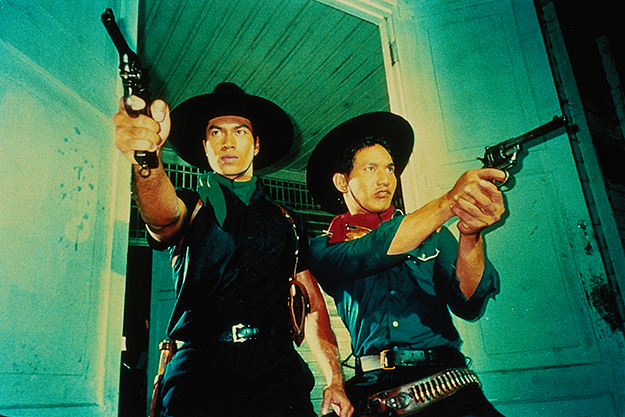
Tears of the Black Tiger
…Fans of Thai film will be thrilled to hear that Wisit Sasanatieng is back! The director of the visually ravishing Tears of the Black Tiger (00) and Citizen Dog (04) disappeared after the colossal failure of his big-budget superhero movie, The Red Eagle (10). But he’s stepped behind the camera again for Runpee (Senior) a horror movie set in a girls’ Catholic school about an outcast student who can smell dead people. Teaming up with a ghost buddy to solve an ancient crime, it’s being cited as a return to form for Sasanatieng.
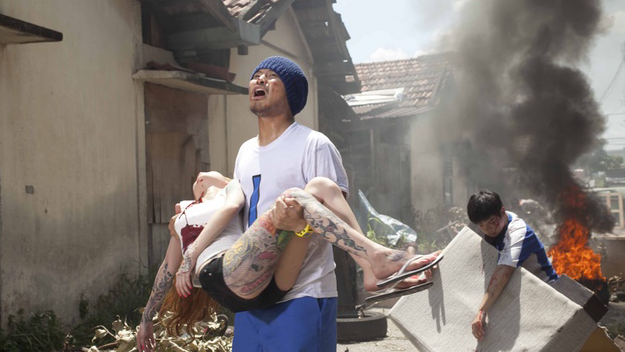
Banglasia
…Finally, Malaysian filmmaker and rapper Namewee had his last movie, the ridiculous, off-the-cuff farce about immigration and xenophobia, Banglasia, banned in his home country. Now he’s taken to Kickstarter where he promises that if he raises the half-million he needs to pay off his investors, he’ll release the movie online for free so everyone around the world—and in his home country—can finally see it.







